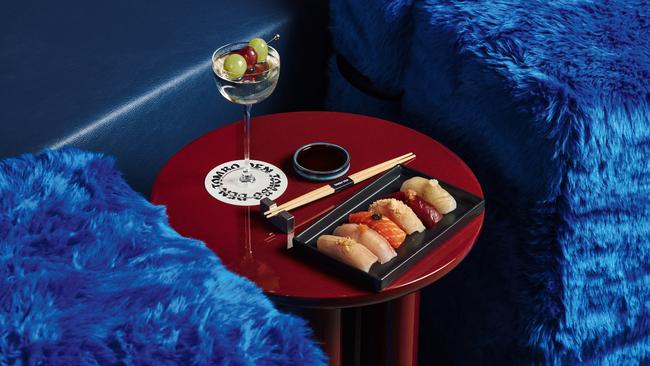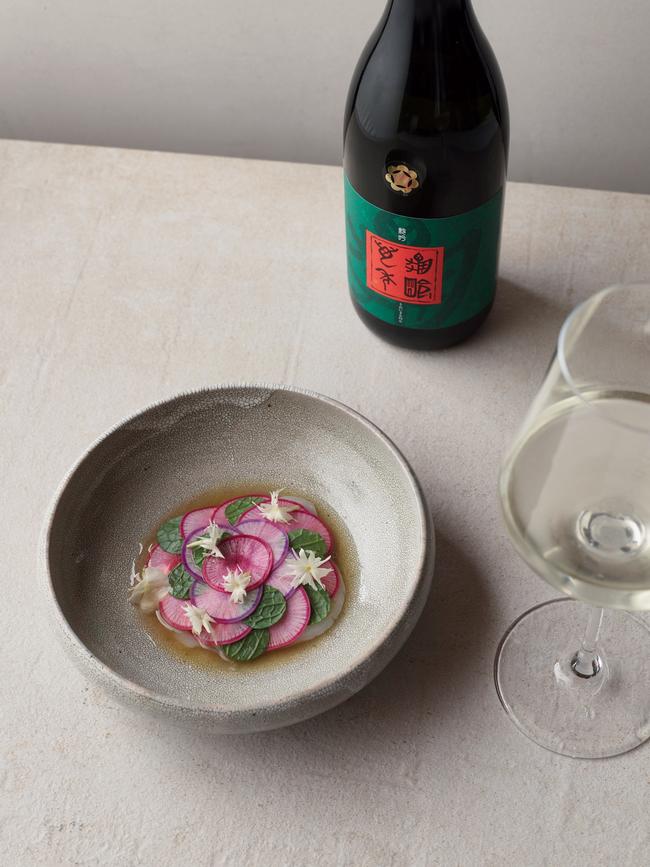Sake might just be the trendiest drink of 2025
Sake, the Japanese drink served hot, cold or even sparkling, is becoming increasingly popular everywhere from fine-dining restaurants to cocktail bars.

Picture this. You’re rifling through the wine list at your favourite restaurant, past the house cocktails, your finger skimming the sparkling list, before going through to the white wine. You hover over something from New Zealand before moving into the reds. Soon enough you’re through those, past the stickies and all of a sudden, there are words you’ve never seen before. Junmai-shu. Namazake. No, you’re not reading a translated list, you’re in the sake section. And you best start getting familiar with it.
For most drinkers, knowledge and understanding of sake extends to just one of its styles, nigori. Even its name is a little in-joke only a more seasoned drinker would understand – nigori sake is made with the lees left in and is best known for being cloudy. And often the first experience of sake for many Australians is overheated plonk of dodgy quality served at some Japanese restaurants.

To the uninitiated, sake is a mysterious liquid; to its experienced drinkers, it boasts as vast and diverse a journey of the palate as its peers from the better-known world of wine. The irony of its mystery is that its ingredients are quite simple. Sake, which is brewed from rice, really has more in common with your favourite beer than offerings from the wine or spirit world. Beyond rice, the average bottle of sake will be a mix of water, yeast and koji mould, a special strain that contains enzymes that convert the rice starch to sugar, then into alcohol via the process of fermentation.
Junmai, ginjo, daiginjo, honjozo, and namazake – the words you’re most likely to see on modern-day wine lists – are the five main kinds of sake. Each style is brewed in a different way and makes use of varying percentages of milling, or polishing, and so boast its own original taste. Sake is made all over Japan, from the snow-capped mountains of Hokkaido in the far north to the steamy island of Okinawa in the south, and each region has differences that contribute to its flavour profile. So crucial is its role in Japanese culinary tradition that in December sake was given an Intangible Cultural Heritage designation by UNESCO for its place in the cultural heritage of humanity. And more and more Aussies are opening their eyes and palates to sake’s heritage, tradition and flavour.
Perhaps the best place to start is with the junmai ginjo styles, a crystalline expression of sake that features at least 60 per cent polished grains. It’s refreshing, delicate and the best way to experience a kaleidoscope of flavours in the sake universe. Head sommelier at Sydney’s Aria, Salvatore Persico, says this is where guests typically start to understand the new pairings that can be achieved with sake.
“This style is a perfect match for a vast selection of dishes, particularly oysters and shellfish,” Persico says. “We also use this sake in our beverage pairings when raw fish is served, often as a refreshing first or second course in our tasting menu.”
Sake isn’t as clear cut as wine when it comes to pairing. Its key flavours can be hidden in its less saturated colour. Two glasses can look very similar, yet taste completely different: one more fruity like cherry or banana; the other more earthy and savoury, with notes of mushroom and nut. But the best sake combines both. “One particularly unique offering on our list is the Mukai Shuzo Ine Mankai,” Persico says, “a sake made from red rice [murasaki rice] and boasting a complex aroma of cherry and vanilla. This sake delivers a sweet profile of cherry and pomegranate, followed by a savoury, umami finish that works beautifully with beetroot.”
But the boundless rolodex of flavours that sake can possess has resulted in more diverse uses than simply pairings on tasting menus. As well as its rise in popularity at fine dining restaurants in Australia, it’s also found itself front and centre on the drinks list, too, often within cocktails.
“Sake has seen a remarkable rise in Australia as more diners embrace its nuanced flavours and versatility,” says Loic Avril, head of wine at the Melbourne-based Lucas Restaurants group. Avril notes that this isn’t just being driven by any sort of staleness in wine offerings. Rather diners are just becoming more adventurous. “We’re seeing a genuine curiosity and enthusiasm for sake,” he says.
Deep in the Tombo Den, the sultry lounge from the Lucas group in Melbourne’s Windsor, sake is being poured with the fervour of the days of Prohibition. “Our sake martini has become the top-selling cocktail,” Avril says of the buzz around the drink. “This modern generation of Australian drinkers are willing to experiment with new profiles and flavours.”

You can think of the uptick in popularity as an extension of the “yuzumania” that’s happened in Australia in recent years. The widely popular citrus fruit has its roots in Japanese and Korean cooking, and these days you can’t go to any bottle shop without seeing some sort of drink making use of its tart flavour. If you like that, there’s even a liqueur made with the fruit that is steeped with sake.
Given a proper chance, sake offers a Swiss Army knife-like adaptability that lends itself to any sort of drinker. There’s even sparkling examples to be discovered that are currently giving prosecco a run for its money in Europe. Wine drinkers need not batten down the hatches, however; no one’s coming for your prized drops. Rather, this is a chance to broaden our palates, embrace something a little different, and enjoy a flavour that’s not likely to be forgotten quickly.
This story is from the February issue of WISH.




To join the conversation, please log in. Don't have an account? Register
Join the conversation, you are commenting as Logout